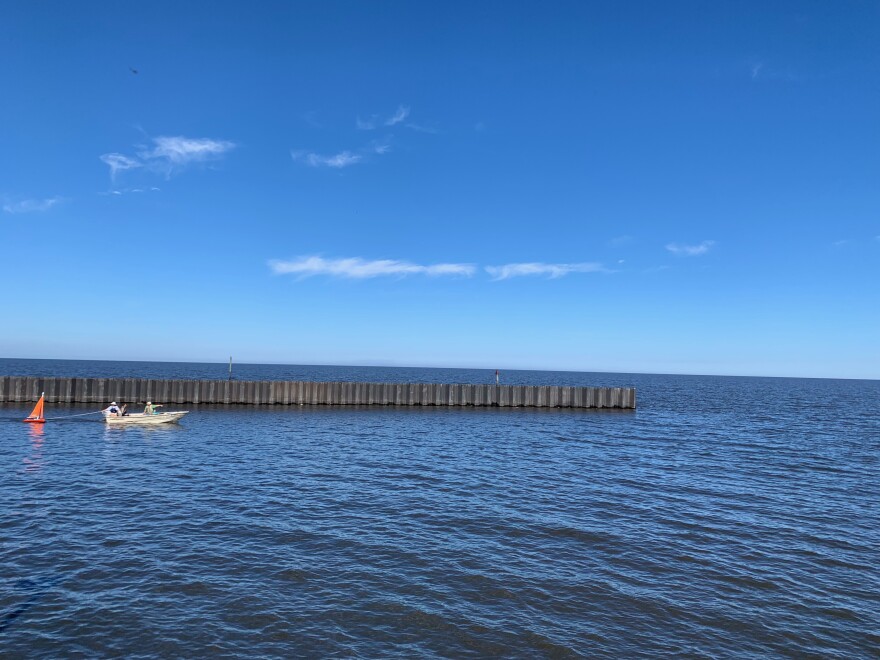With clear skies and breezy winds, Florida Atlantic University (FAU) revealed its newest invention Tuesday at Pahokee Marina, in the southern half of Lake Okeechobee: a solar powered sailboat that will monitor and test for harmful algal blooms.
The Nav2 is the first autonomous vessel to be used for in-land algae monitoring. It’s the brainchild of FAU and the company Navocean. The two had an early version of the vessel monitor red tide on the west coast of Florida in December 2017 before making the official launch in Lake Okeechobee.
“We thought ‘Wow, isn’t lake Okeechobee really a great spot,'” said Dr. Jordan Beckler, an Assistant Professor at FAU. “It’s inland, it’s kind of remote, it’s hard to access, it’s expensive to go out and sample [water].”
The Nav2 has three sensors. One measures the chlorophyll and tannins in the water, another measures water particles and the final sensor measures the water’s salinity. When combined, the information paints a picture of what conditions lead to harmful algal blooms.
But Beckler says the raw data cannot be taken as any clear indication of harmful algae; it must still be validated. In reality, the vessel is meant to give scientists a head start to understanding algal blooms forming in Lake Okeechobee.
“It allows us to do adaptive sampling. So, if we see a bloom forming, or evidence of a bloom, we can mobilize our people - actually go out there in a boat and sample intensively that spot.”
Nutrient pollution from Lake Okeechobee was the source of the most recent outbreak of red tide on the west and east coast of Florida. Red tide is just one type of harmful algae that can bloom. But, Beckler says very little is known as to why it happens.

“We’re trying to understand where, when, why, how the blooms form. [Because] as scientists that’s our job, right? We wanna provide the public [and] politicians with the tools, the knowledge that they need to make sound decisions.”
The information the Nav2 collects can be seen on the Gulf Of Mexico Coastal Ocean Observing System website.


